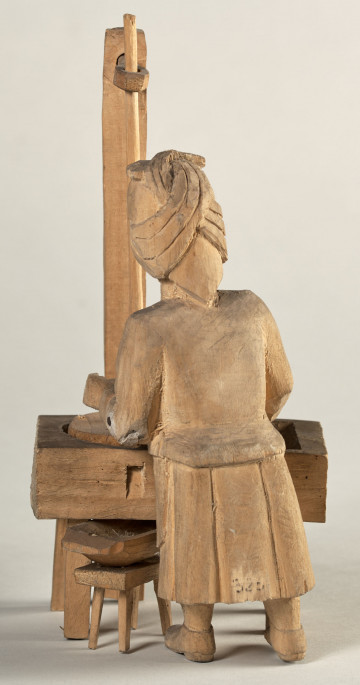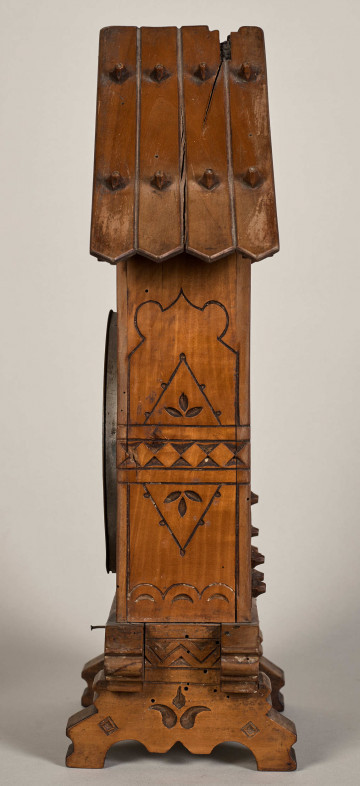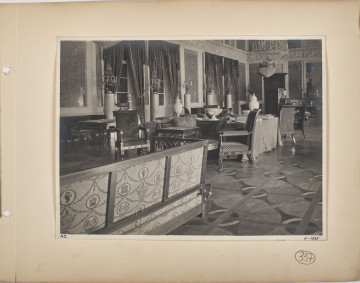
Woman at the mills
20th century
Castle Museum in Łańcut
Part of the collection: History of the city and the region
Katanka is a women's outer garment, insulated and worn in the colder seasons. It is a kind of blouse or contemporary jacket with a stand-up collar, long sleeves and a basque, fastened with buttons. It was a festive garment worn over a shirt, usually a decorated one. It was the most representative part of the outfit, therefore it was usually made of good quality materials and richly adorned. It was often worn with a folded square scarf covering the back, especially by married women. It was decorated in the most visible places, not obscured by the scarf – at the front and at the ends of the sleeves. The neckline was plain, trimmed with ribbon, because it was covered by the decorative collar of the shirt. Embroidered shirt sleeves were visible inside the wide sleeves of the katanka. They were made of thicker, noble materials such as velvet, cloth, wool – single-coloured and woven in decorative patterns. They were lined with warm flannel or sheepskin, sometimes they were also padded. The type of the fabric and colour – black or navy blue, poppy red, maroon, amaranth, blue and green – made them stand out. This jacket is a buttoned, padded, with long, bell-shaped, flared sleeves, two diamond-shaped pockets sewn onto the front, trimmed with ribbon and decorated. The underside of the sleeves is lined with patterned wool. Depending on the region, this piece of garment was also referred to as kabata, kaftan or kaftanik. Joanna Kluz Works cited: Ignas K., Ludowe stroje przeworskie – przeszłość i przyszłość, Przeworsk 2017.
Dimensions
height: 46 cm, width: 49 cm
Object type
History of the city and the region
Technique
machine sewing, hand sewing
Material
wool
Creation time / dating
Creation / finding place
Owner
Castle Museum in Łańcut
Identification number
Location / status

20th century
Castle Museum in Łańcut

20th century
Castle Museum in Łańcut

20th century
Castle Museum in Łańcut
DISCOVER this TOPIC
National Museum in Szczecin
DISCOVER this PATH
Educational path